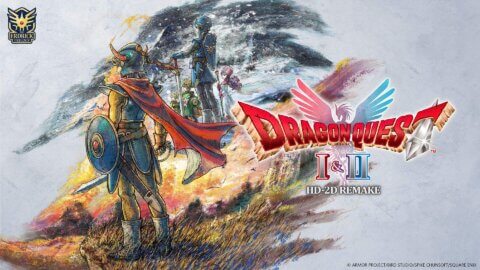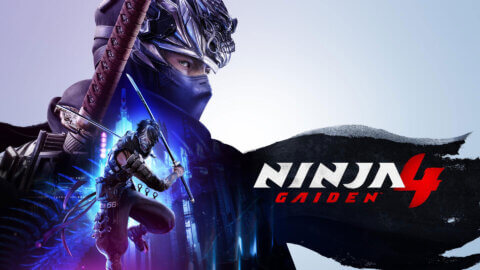I have played a lot of games across a lot of systems, but the Dragon Quest series has always had a special place in my heart. Growing up as a massive fan of Dragon Ball, I gravitated towards Dragon Quest because of Akira Toriyama’s distinct art and then came to fall in love with the charm and sense of adventure that the games in the Dragon Quest series offer. So stepping into the Dragon Quest I and II HD-2D Remake on Nintendo Switch 2 felt like returning to where it all started, only rebuilt with a lot of care and modern polish.
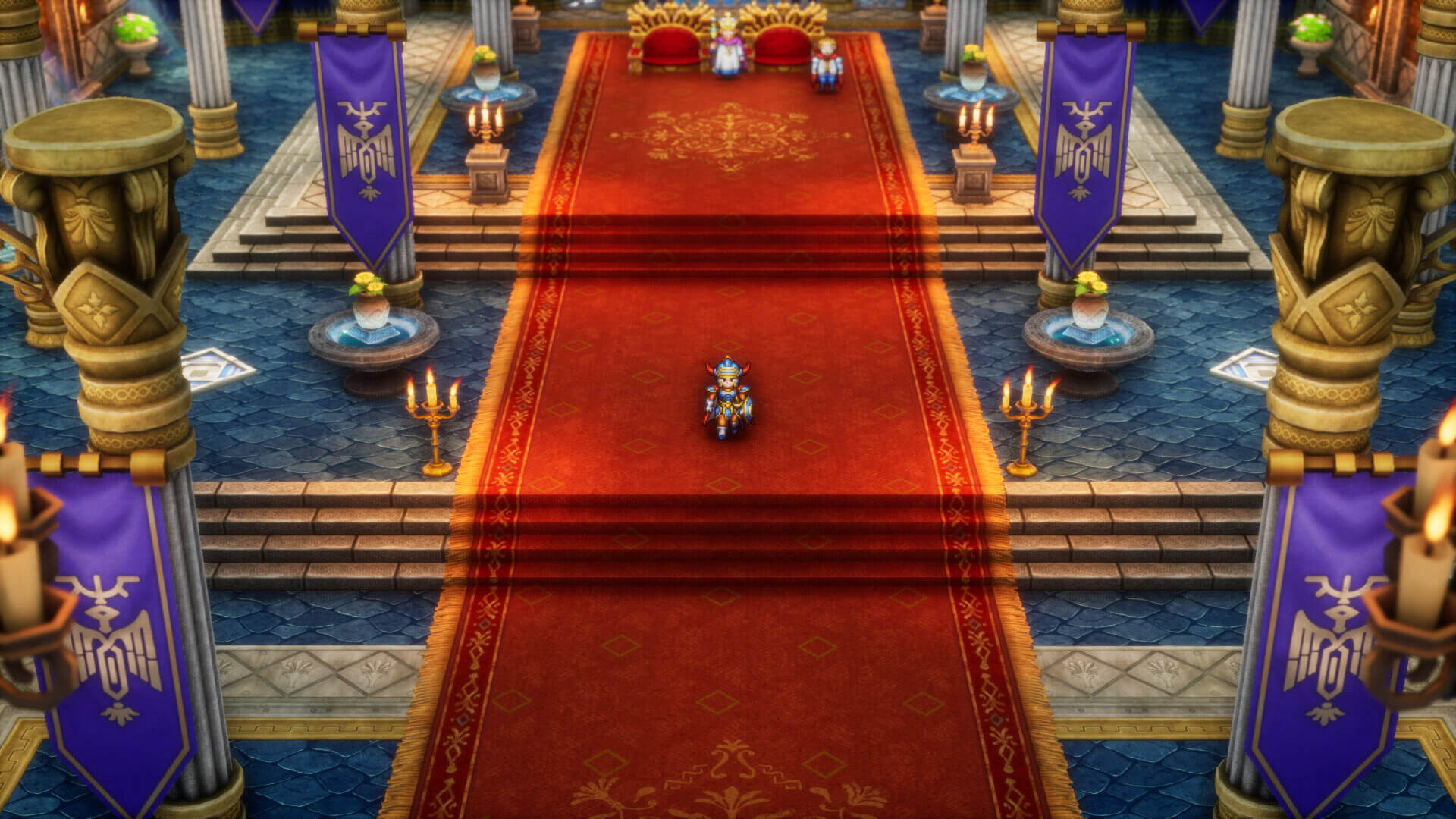
This new collection follows last year’s Dragon Quest III HD-2D Remake, continuing Square Enix’s ambitious remake project. While Dragon Quest III was a single, self contained release, this one includes two games that follow it in the timeline. Dragon Quest I and II are direct sequels to III, so if you want to experience the story in chronological order, it makes sense to start with III first. That is the route I recommend to newcomers. You will appreciate certain story moments more that way. Still, nothing here requires you to have played III if you want to jump straight into this package.
The first thing that hits you is the visual upgrade. The HD-2D presentation has become a signature look for Square Enix, and it fits Dragon Quest as if it was invented for it. The art style blends crisp sprites with detailed 3D environments, and the result feels both classic and modern. Characters pop with Toriyama’s charm, towns glow with warm lighting, spell effects shower particles across the screen, and the camera often shifts to create small dramatic touches. It all respects the originals while giving them the scale and presence they never had on older hardware. The world feels alive in a way that stays true to its roots.
Dragon Quest I begins as a straightforward adventure, and that simplicity remains part of its appeal. You play as a descendant of the legendary hero Erdrick and set out to defeat the evil Dragonlord. The plot is lean. There are no major twists or complicated character arcs. Instead, the focus is on exploration, discovery, and gradual growth. What stands out is how much personality the world still carries even with such a direct premise. Townsfolk speak with humor and warmth, secrets hide behind simple puzzles, and the pace is brisk. Dragon Quest I is also a solo journey. You travel alone, fight alone, and face challenges without the party system that would later define the franchise. In this remake, the tone remains faithful, but small cutscenes, added dialogue, and a handful of new interactions help flesh out moments that were once only implied.
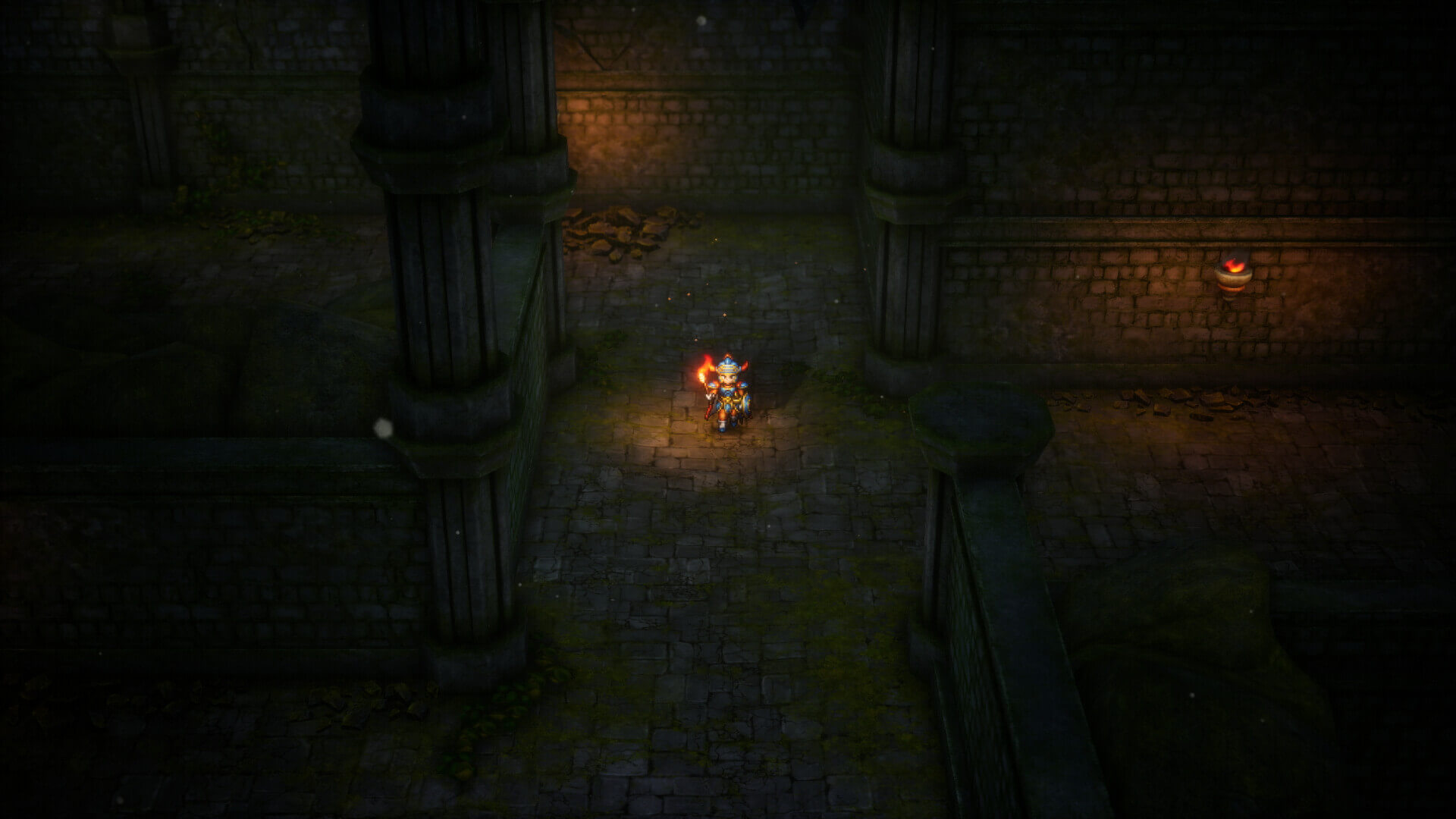
Dragon Quest II takes a very different approach. It is much larger, more complex, and introduces the full party mechanic. This is where the series began to take the shape people know today. You play as a prince who recruits a number of other members of royal lineage, each with distinct roles in battle. The world expands greatly in scope, and the tone grows more ambitious. Compared to the first game, Dragon Quest II feels like a true adventure across a living world. The remake builds on this by adding new areas, new story scenes, and new characters to meet and recruit. These additions make the journey feel more modern without losing its classic structure.
One thing that impressed me across both games is how Square Enix updated the combat. Spells, abilities, and enemies from later entries in the series have been folded into these remakes. This gives the battles more depth and variety than the originals had. For players who know every inch of the older versions, this creates a fresh experience. More attack options, more support skills, more enemy types, and smoother combat flow make a big difference.
The battle system itself follows the classic turn based style. You choose commands for your character or party, watch actions play out in order based on agility, and adjust tactics as needed. Dragon Quest keeps things easy to understand, but there is still strategy. Managing healing, debuffs, and buffs matters. The remake borrows one of the smartest quality of life features from Dragon Quest III HD-2D. You can speed battles up by switching between normal, fast, and ultra fast modes. Grinding for levels or fighting through enemy filled dungeons becomes far smoother. It turns what was once a slow march into a brisk rhythm that respects your time without removing the old school flavor.

Another welcome feature is the map objective marker toggle. You can turn on icons that show where to head next if you want guidance, which mirrors the option in the Dragon Quest III remake. This is great for newcomers or anyone returning after a break. If you prefer to explore without hints, you can disable it and play in a more traditional style.
The remake also includes multiple difficulty settings. You can set the game to be slightly easier if you just want to enjoy the story, or raise the challenge if you want battles to hit harder and demand more planning. Dragon Quest games have always been flexible, and these options help keep that spirit alive.
One of the biggest additions across both games is full voice acting. For the first time, characters speak during main story events, and it adds emotion and personality that the original games simply could not deliver. The performances feel natural. They match the tone of Dragon Quest, light and earnest without feeling cheesy. The voices help every scene feel grounded in a real world.
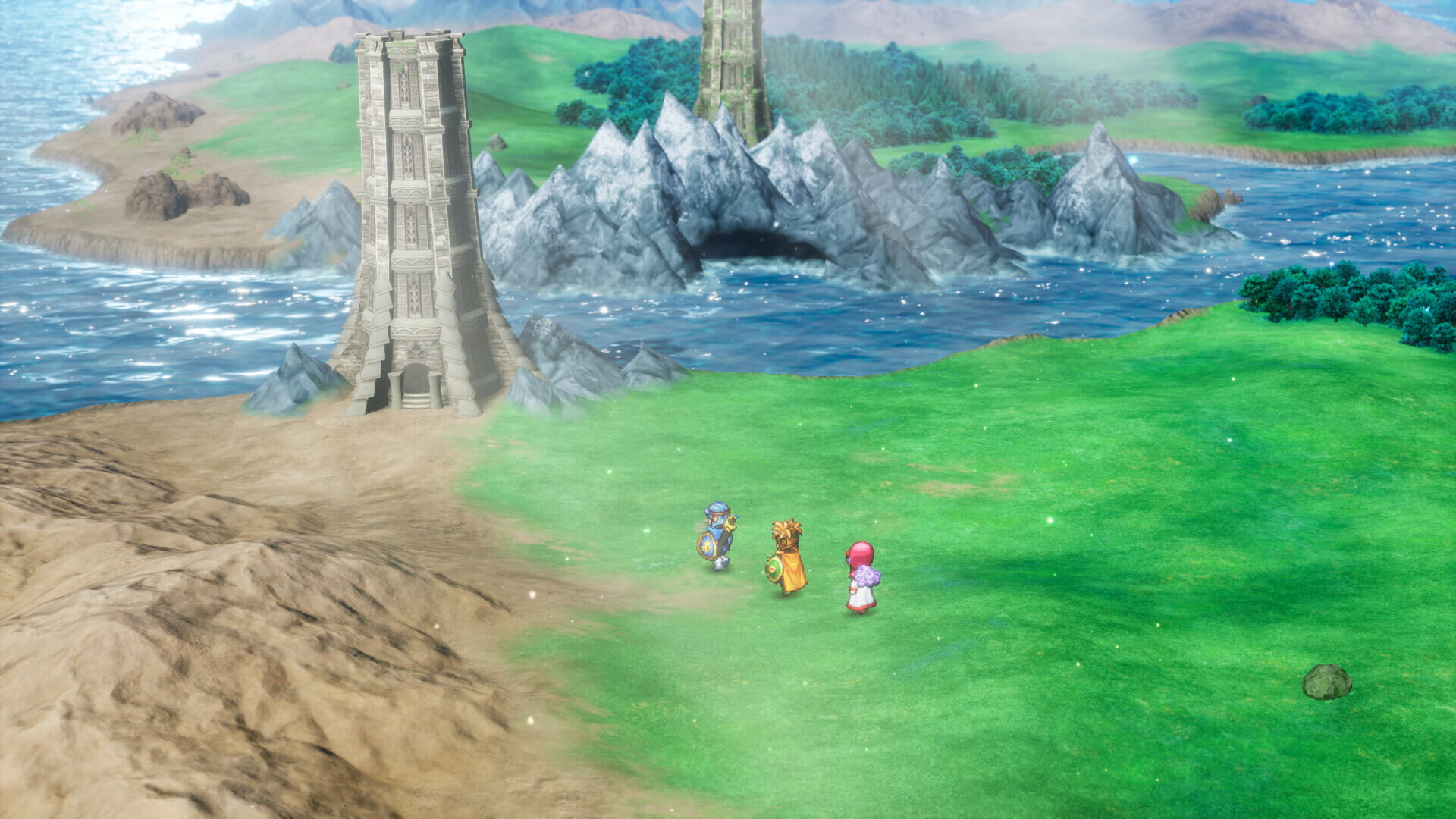
The soundtrack might be the most nostalgic part of the package. Classic tracks return with clean recordings that honor the original melodies. The overworld themes still carry that sense of wonder. The town music still feels warm and safe. The battle themes still build tension with simple, memorable progressions. Dragon Quest music has always been some of the best in the genre, and these arrangements reinforce why it remains so beloved.
Of course, no remake is perfect. While the HD-2D visuals are beautiful, there are moments where the camera swings a little too dramatically, making it hard to see small details or paths. There are also a few difficulty spikes in Dragon Quest II that remain faithful to the original but might frustrate new players, even with the updated tools. And although the battle speed options help, there are still stretches where random encounters come too frequently.
Even with those issues, I think the core design of both games holds up remarkably well nearly forty years later. The structure is clean, the exploration is satisfying, and the sense of progress remains rewarding. These games helped shape the genre, and this remake proves why they mattered in the first place.
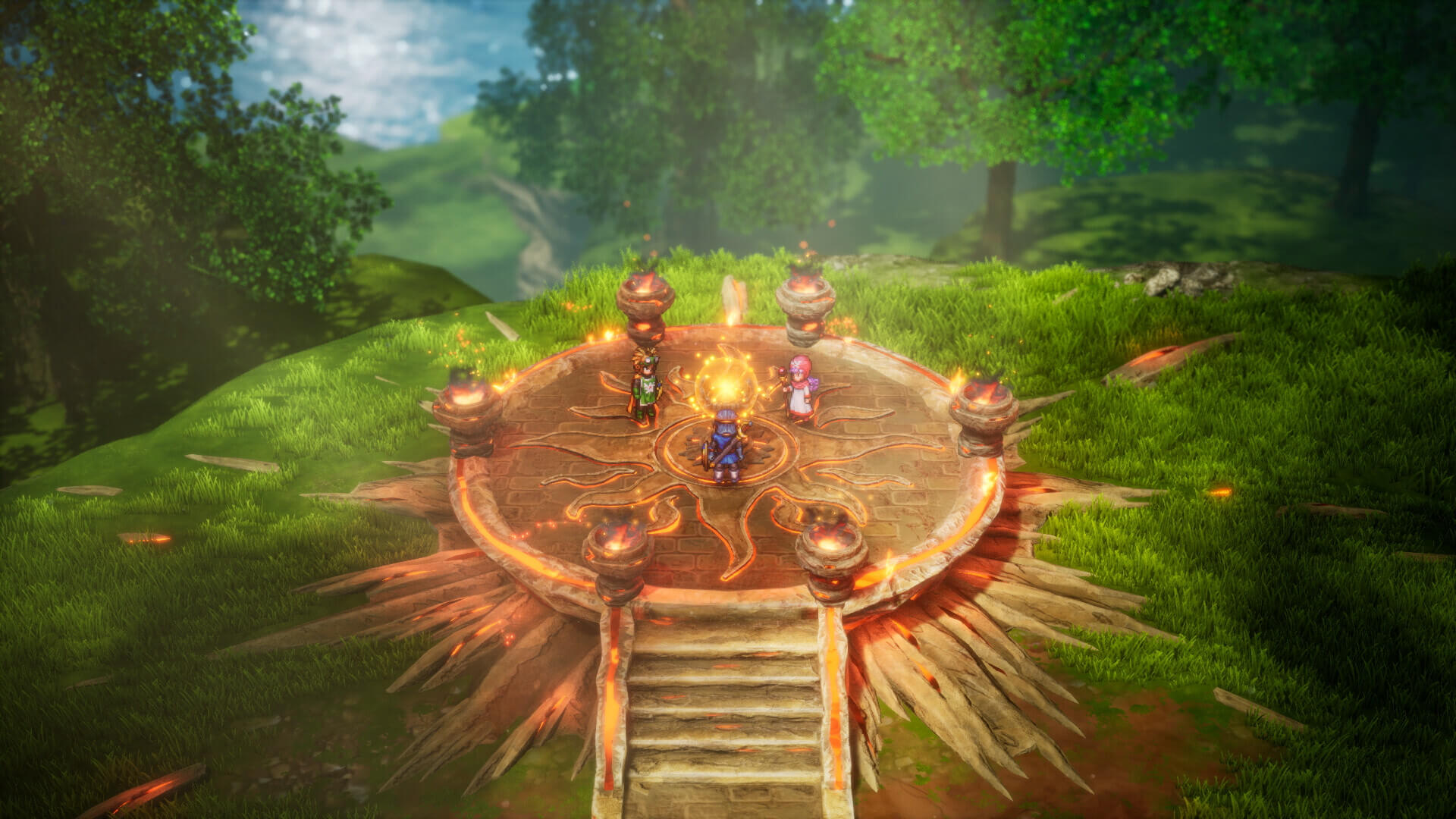
This collection preserves the history of Dragon Quest while making it easier to appreciate for modern audiences. It gives new players a smooth entry point and longtime fans a chance to revisit the originals with fresh eyes. Dragon Quest I and II HD-2D Remake celebrates the past without getting trapped in it. It respects what made these games timeless and adds enough new content to make the journey feel renewed.
A Nintendo Switch 2 review code was provided by the publisher for the purpose of this review.
If you want to see more content like this and never miss one of our frequent gaming and anime giveaways come and Follow Ani-Game on Twitter.
9
- + 2 games packed with adventure
- + Modernised with new features and visuals
- + Voice acted for the first time
- + Incredible soundtracks
- - Difficulty spikes and enemy frequency affects pacing at times
